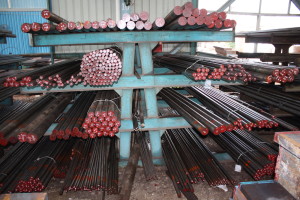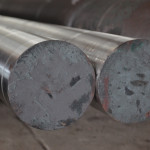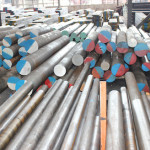hsla-65 steel
OTAI SPECIAL STEEL is hsla-65 steel stockholders and suppliers from China. more than 25 years of experience in steel round bar, flat bar and plate supply.
HSLA steels have yield strengths greater than 275 MPa (40 ksi) and are typically 20% to 30% lighter than carbon steel at the same strength levels. They are different than other advanced high strength steels (AHSS) as they are named after their yield strength.
Form of Supply
hsla-65 steel, we can supply the round bar, steel flat bar, plate, hexagonal steel bar and steel square block. Round bar can be sawn to your required lengths as one offs or multiple cut pieces. Rectangular pieces can be sawn from flat bar or plate to your specific sizes. Ground tool steel bar can be supplied, providing a quality precision finished bar to tight tolerances.
- Round
- sheet
- Square
- Plate
Chemical composition
| C(%) | ≤0.10 | Si(%) | 0.10~0.40 | Mn(%) | 1.10~1.65 | P(%) | ≤0.250 |
| S(%) | ≤0.01 | Cr(%) | ≤0.20 | Mo (%) | ≤0.08 | V(%) | ≤0.10 |
Mechanical Properties
HSLA steels have yield strengths greater than 275 MPa (40 ksi) and are typically 20% to 30% lighter than carbon steel at the same strength levels. They are different than other advanced high strength steels (AHSS) as they are named after their yield strength.
HSLA-65 plate steels can be produced using one of five plate manufacturing techniques: normalizing, controlled rolling (CR), controlled rolling followed by accelerated cooling (CR-AC), direct quenching and tempering (DQT), or conventional quenching and tempering (Q&T).
The HSLA-65 steels are characterized by low carbon content and low alloy content, and they exhibit a low carbon equivalent that allows improved plate weldability.
- These characteristics in turn provide the steel plate with a refined microstructure that ensures high strength and toughness;
- Eliminate or substantially reduce the need for preheating during welding;
- Resist susceptibility to hydrogen-assisted cracking (HAC) in the weld heat affected zone (HAZ) when fusion (arc) welded using low heat-input conditions;
- Depending on section thickness, facilitate high heat-input welding (about 2 kJ/mm) without significant loss of strength or toughness in the HAZ.
However, application of this plate manufacturing process and of these controls produces significant differences in the metallurgical structure and range of mechanical properties of the HSLA-65 plate steels both among themselves and versus conventional higher strength steel (HSS) plates.
For example, among the HSLA-65 plate steels, those produced by Q&T exhibit minimal variability in mechanical properties, especially in thicker plates. Besides variability in mechanical properties depending on plate thickness, the CR and CR-AC plate steels exhibit a relatively higher yield strength to ultimate tensile strength (YS/UTS) ratio than do DQT and Q&T steels. Such differences in processing and properties of HSLA-65 plate steels could potentially affect the selection and control of various secondary fabrication practices, including arc welding.
Consequently, fabricators must exercise extreme caution when transferring allowable limits of certified secondary fabrication practices from one type of HSLA-65 plate steel to another, even for the same plate thickness.
Contact our experienced sales team to help you with your hsla-65 steel questions inquiry by Email or telephone. The questions will be replied in 24 hours.
Email: jack@otaisteel.com
Tel: +86 769 2319 0193
Fax: +86-769-88705839






